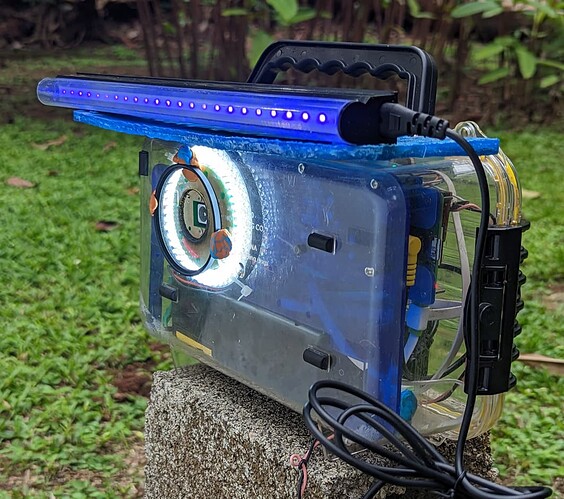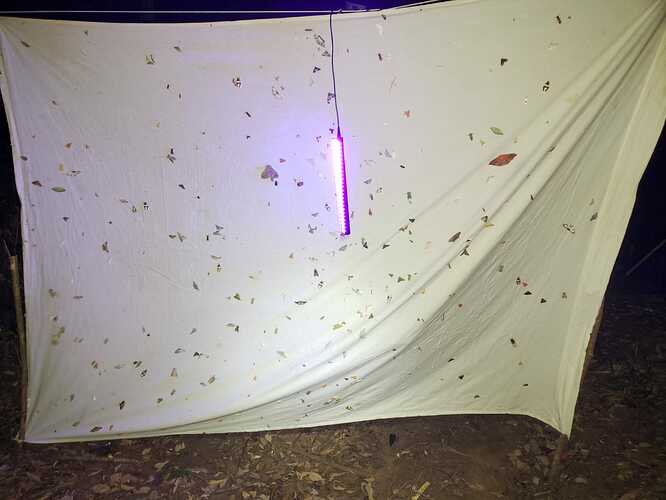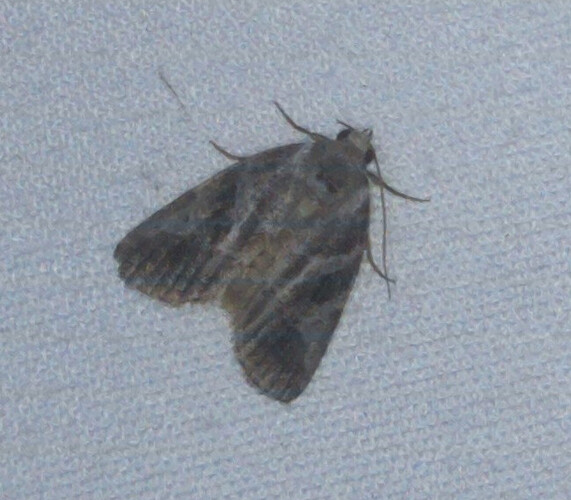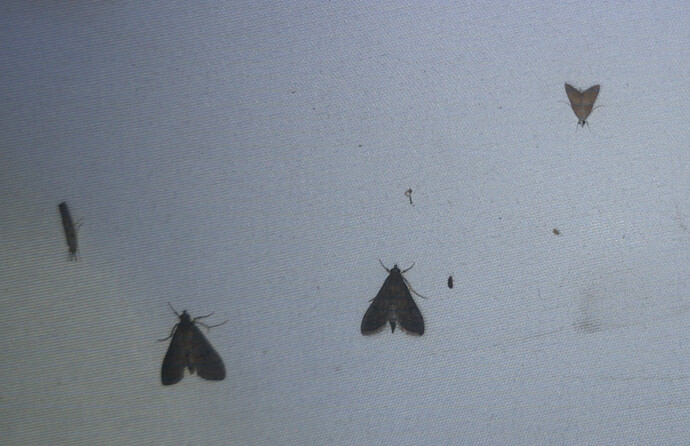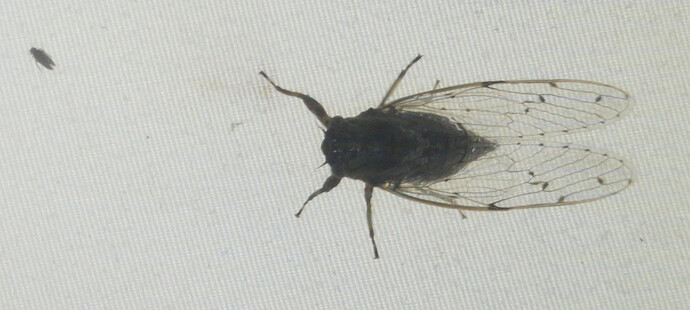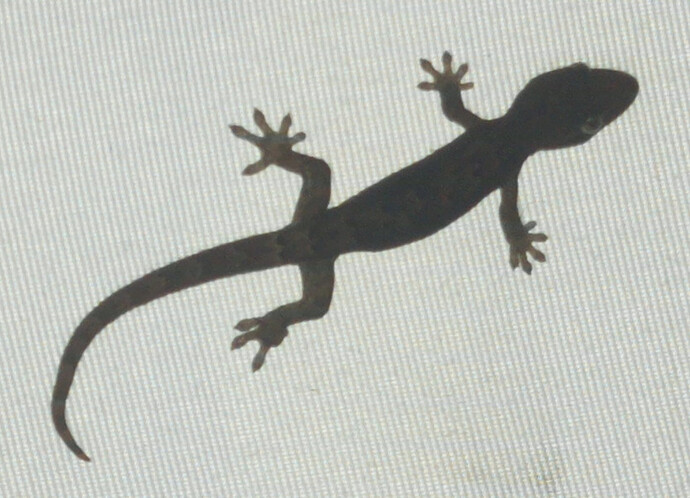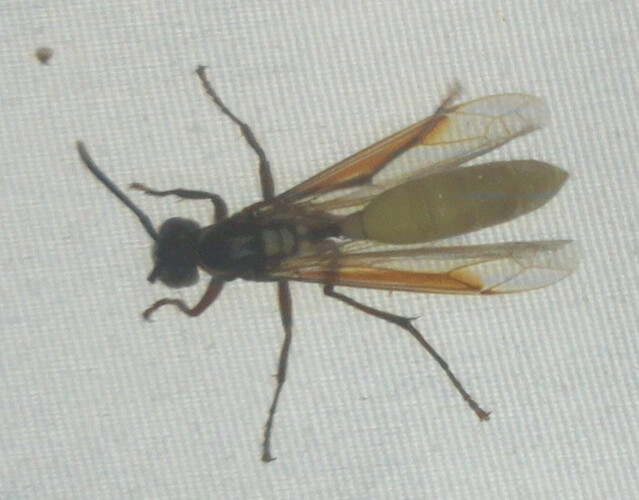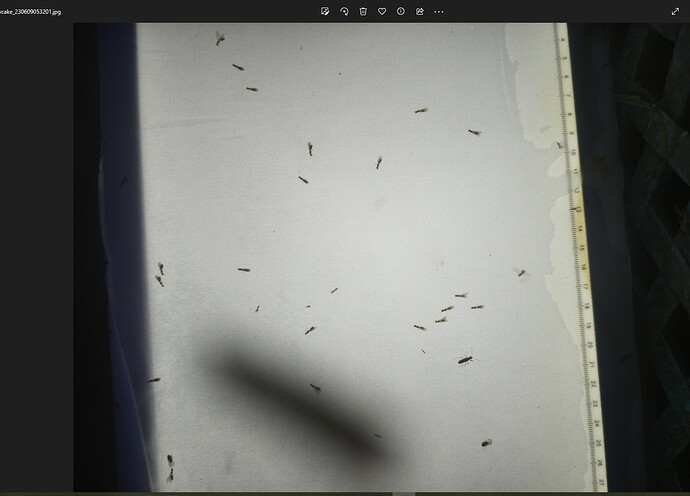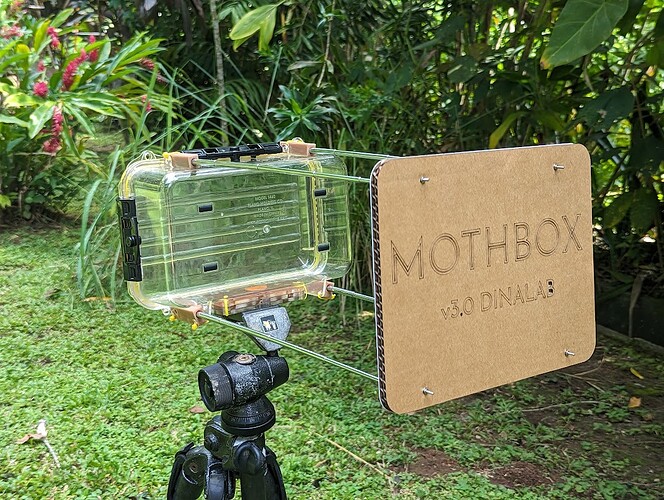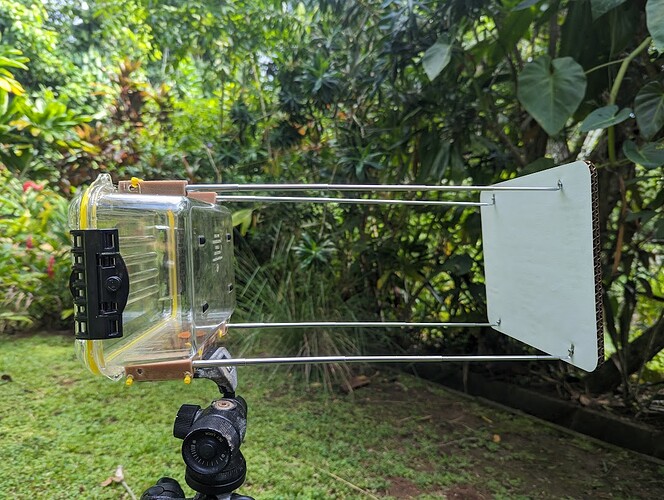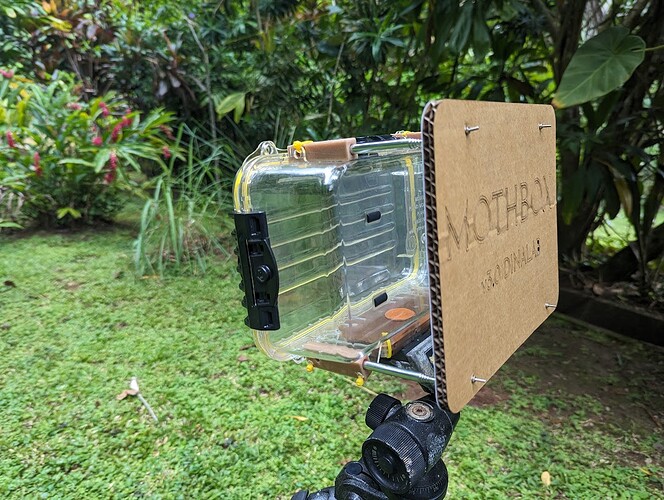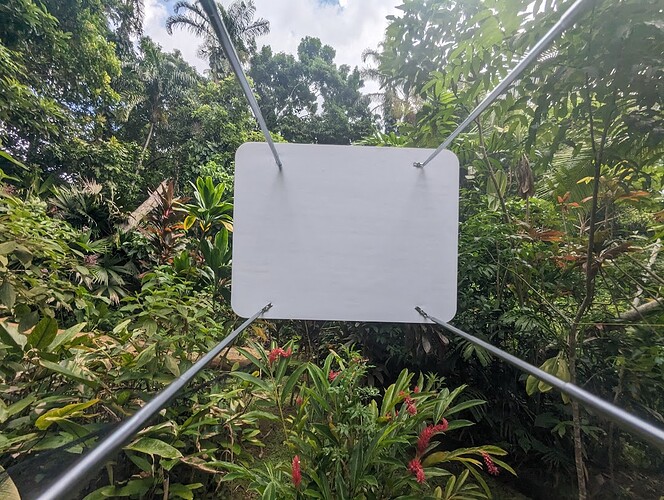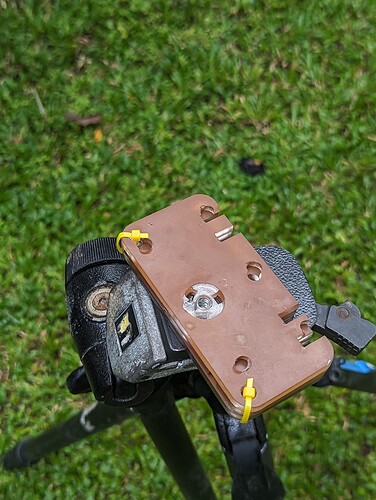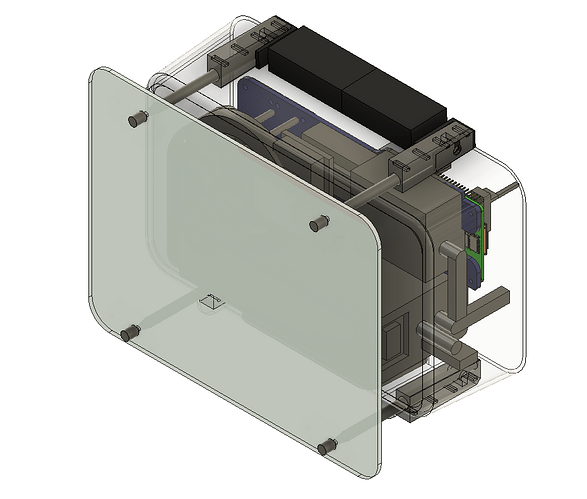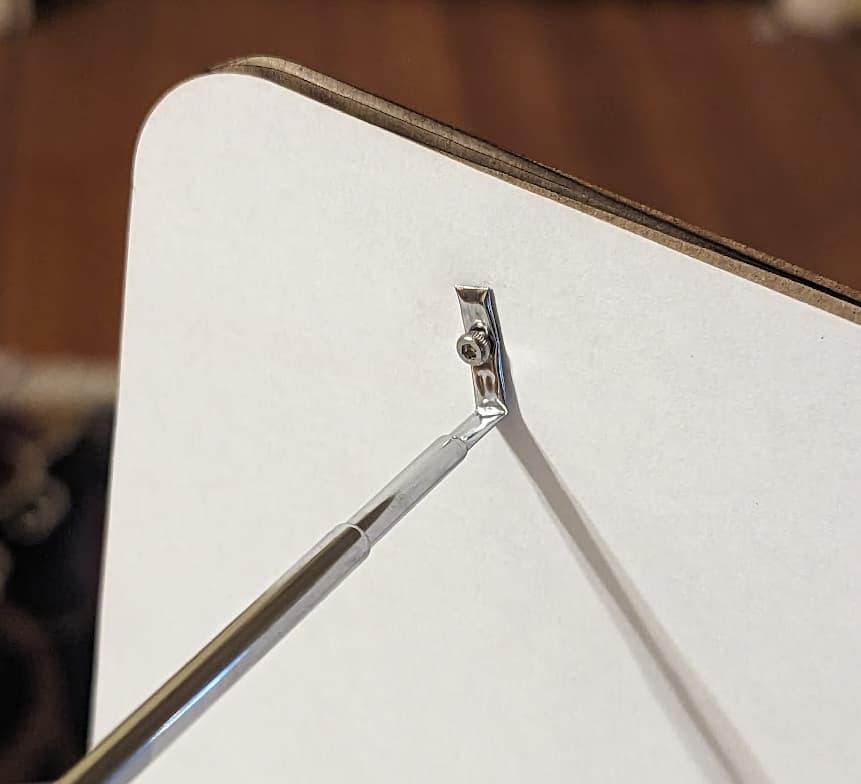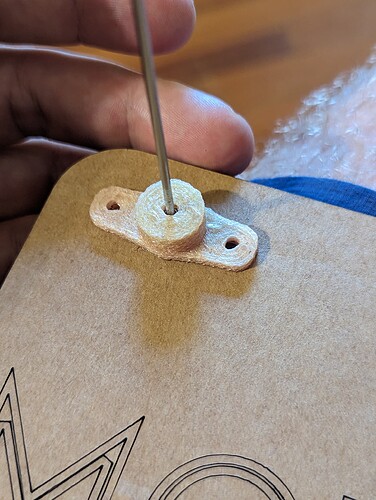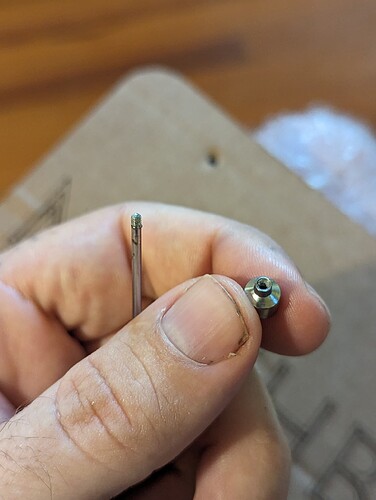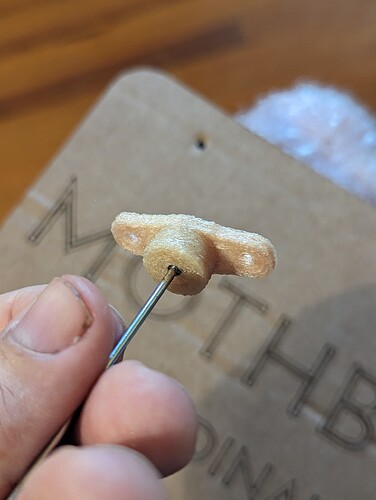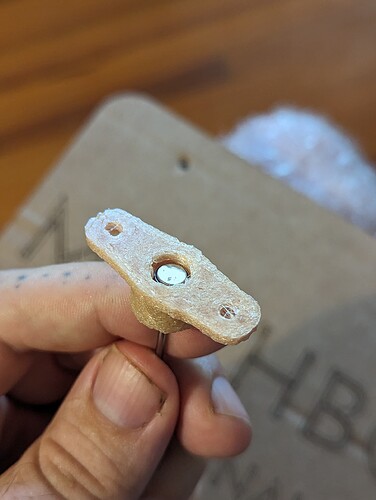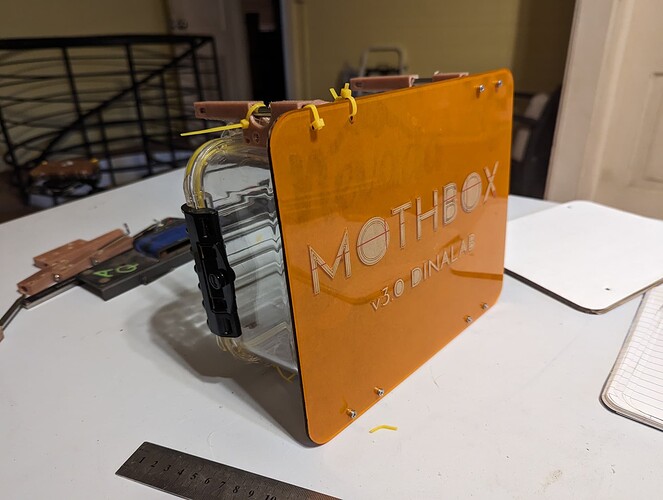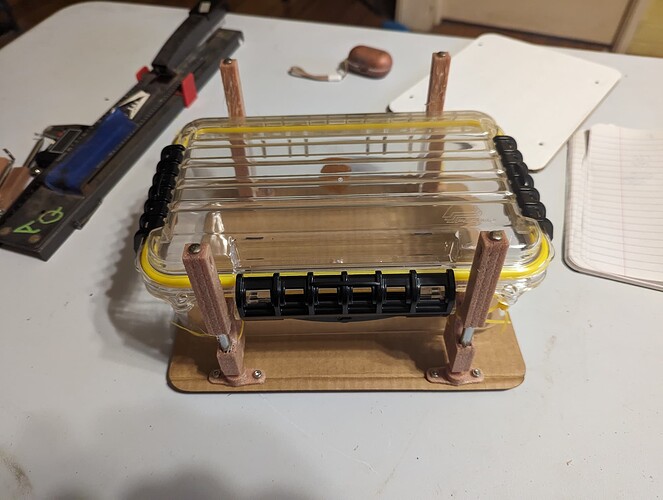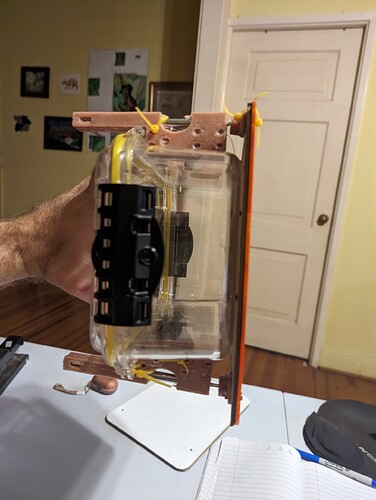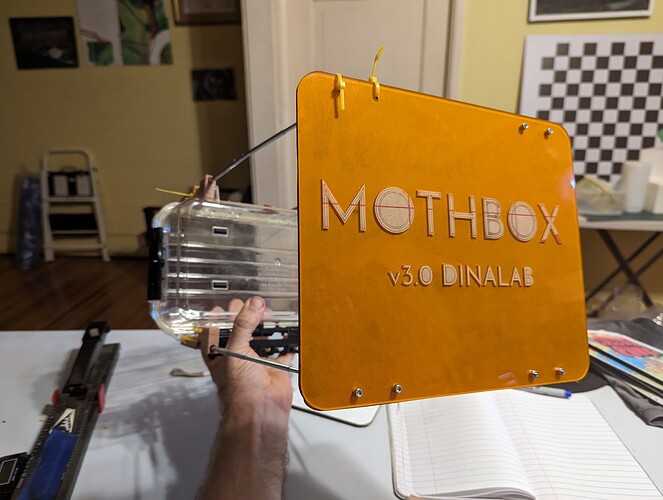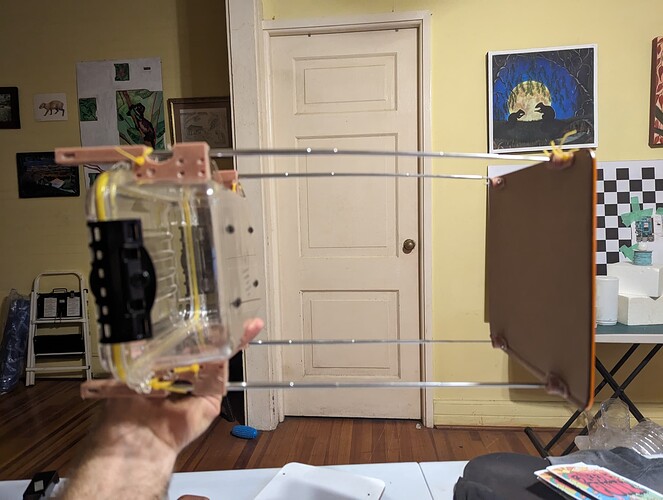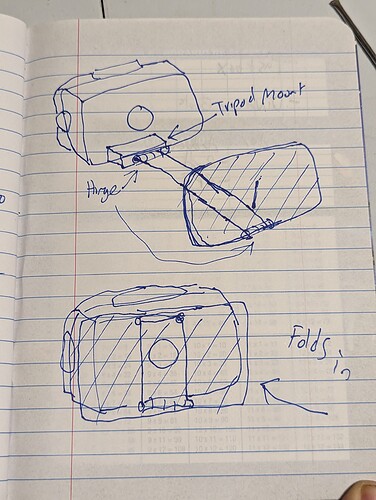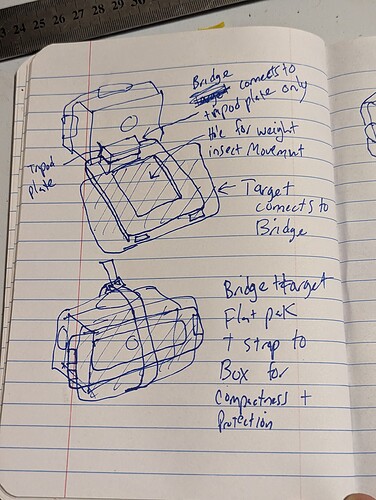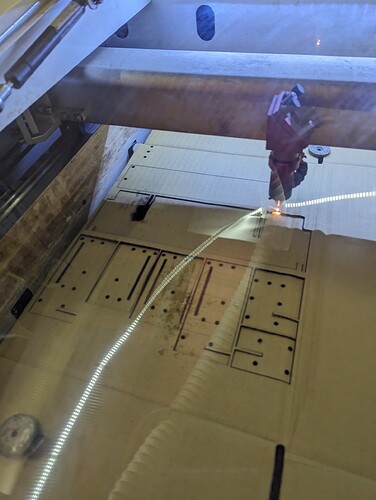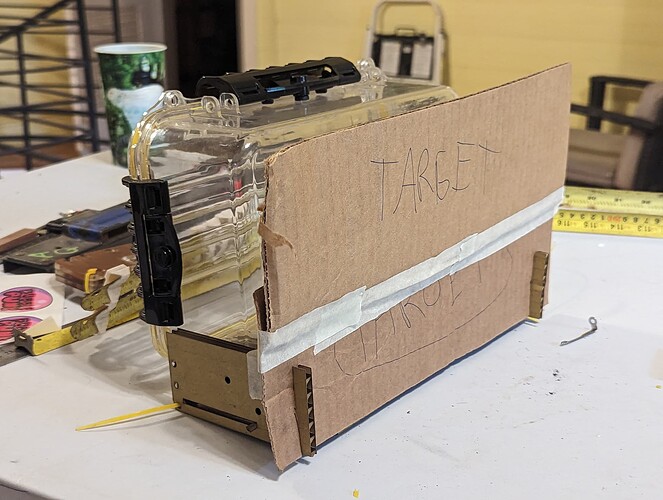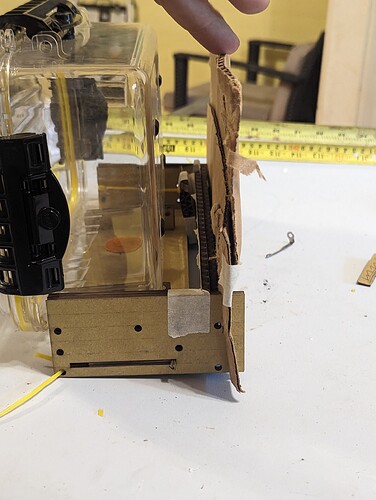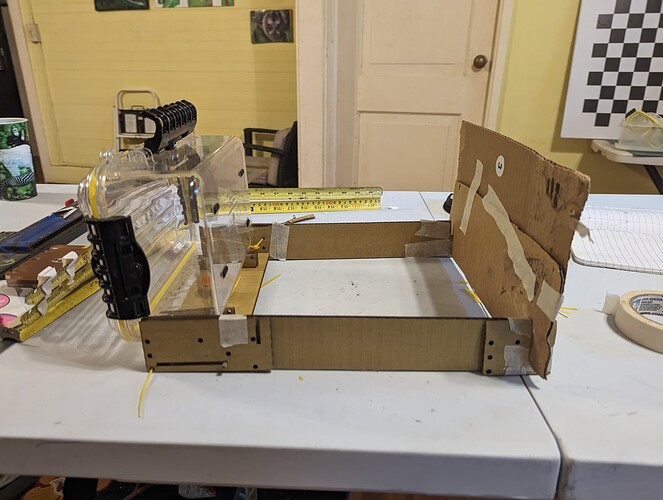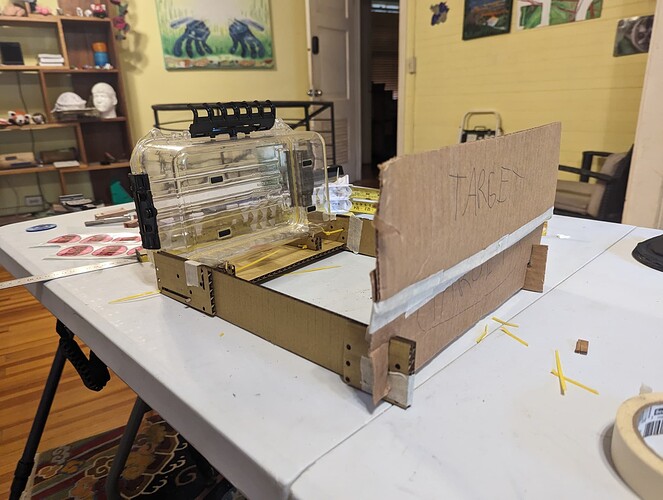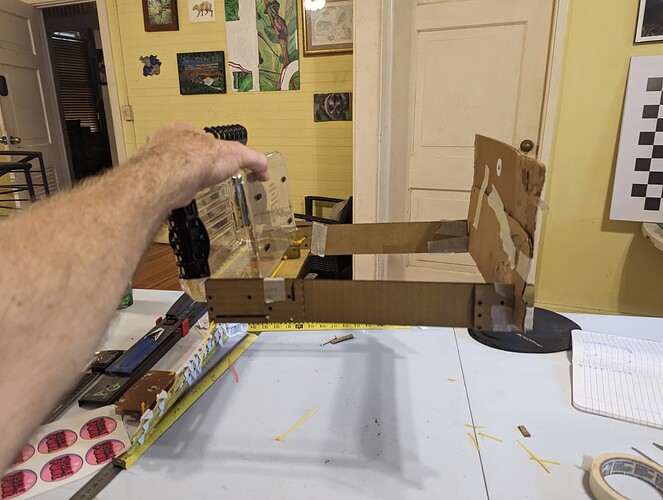Hi folks! a project @Hubertszcz and i started up last year got some more funding thanks to the experiment.com thing. We got about 4-5K we are putting towards designing a new version of the device
What is it?
an automated device that lights up a sheet and documents the insects that visit it.
We originally made it for reforestation groups that will use it to monitor changes in biodiversity (this is what @Hubertszcz is up to).
This is how scientists usually use this technique for studying biodiversity
but they have to hang out with this sheet all night and take photos of each individual moth. This is a very time consuming thing that generally requires a good amount of expertise. The mothbox is designed to try to automate this in a cheap, accessible way!
Here’s some design targets for it:
- be weatherproof and self-contained and functioning while left outside in the rainforest for a month at a time
- automatically turn itself on for 4 random nights during that month
- get high quality images of the insect visitors (for instance moths that are only 5mm long) that can be processed later
- be reliably usable by non-experts
- cost less than $400 in parts
- the attractive/ photographable area should be at least the size of an A4 piece of paper (210x297mm)
- adaptable to use different types of lights
our current version has been built and tested over the past couple months
these are some example cropped images
we need to work on the exposure settings of the camera but other creatures also visit it
This is a (not great) full image of the entire sheet. You can see a insect flew in front of the light in this one, usually they are clearer, but just showing there are always exceptions.
Current State:
Right now the project consists of a pretty nice compact box with lights connected to a RPI4 and a Arducam 64MP camera. It connects to a big battery (38 Amp hour) Amazon.com
full parts list here
The device can run for about 10 hours, which is enough for maybe 1-2 nights. The big lights it uses are pretty power hungry LED black lights (they use 5V 40ma), and the pi uses something like 5V 10ma. it uses mechanical relays to turn the lights on and off. It has a real time clock to keep time.
In earlier versions we used a Pi because we were going to make a thing that connected to the internet and did on-board image processing, and used the 64 mp arducam. thus needed to use a RPi.
but our next version doesn’t necessarily need to use a Pi if we can find a high quality thing that can take images just as cheaply.
Questions for yall:
- Anyone got experience doing ultra-low power stuff with RPi’s? i thought it would be more straightforward
- Anyone got suggestions in other things that could be triggered to take nice high res photos of insects that doesn’t necessarily need a pi?
- What’s a good place to host/document this project as we work on it? Right now all our stuff has been just on a big google drive. I know @julianstirling uses gitbuilding, though i have never used it myself. Any other tips on nice practices for starting up an open science project nicely (this time since we have more than a couple weeks to slap things together on v2 of this project?)
